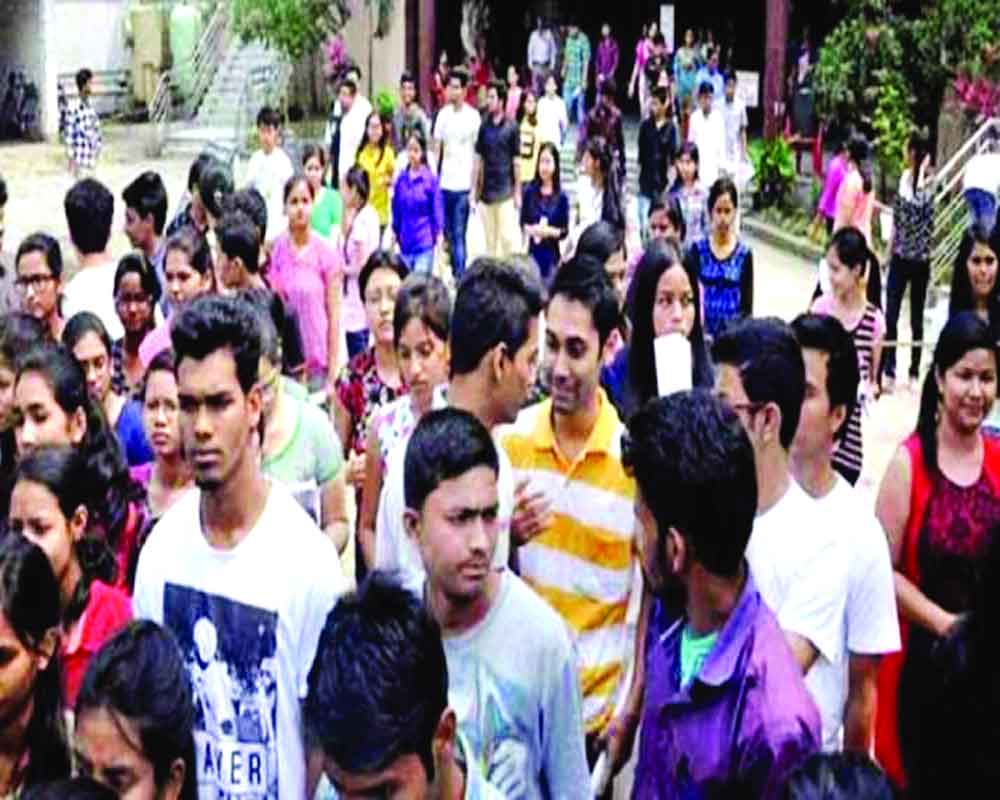A staggering 83 per cent of unemployed individuals are youth, while only 17.5 per cent of rural youth in India are engaged in regular work, according to a joint report by the International Labour Organisation (ILO) and the Institute for Human Development (IHD).
This revelation has provided Opposition parties with ample ammunition to criticise the performance of the BJP-led Central Government amid the ongoing electoral battle.
The study ‘India Employment Report 2024’, released by Chief Economic Adviser V Anantha Nageswaran, paints grim job scenario, stating that youth employment and underemployment increased between 2000 and 2019 but declined during the pandemic years with educated youths experiencing much higher levels of unemployment in the country during the period. Thus, indicating lack of quality employment opportunities, especially among those who have achieved higher education.
Opposition parties, particularly the Congress, have seized upon the report’s observations to attack the Government over the issue of joblessness, accusing it of neglecting the youth’s future.
While India’s large young workforce is a demographic dividend, the report noted that they don’t appear to have the skills to deliver — with 75 per cent of youth unable to send emails with attachments, 60 per cent unable to copy and paste files, and 90 per cent unable to put a mathematical formula into a spreadsheet, it said.
Further, the share of people employed in industry and manufacturing has remained the same since 2012 at 26 per cent of the total workforce. The percentage of youth involved in economic activities decreased from 42 per cent in 2012 to 37 per cent by 2022.
Also, “the number of the educated, possessing at least secondary education, among the unemployed doubled from 35.2 per cent in 2000 to 66 per cent in 2022,” said the report reflecting poorly on the Government’s economic policies, particularly in addressing the challenges faced by India’s labour market.
The report’s revelation of stagnation in industry and manufacturing employment since 2012 points to the dismal growth in key sectors of the economy, as per the report which has come as an embarrassment for the Modi Government which is positioning itself as a job provider to the youth, particularly during the election season.
Congress president Mallikarjun Kharge urged people to remember before voting that Prime Minister Narendra Modi promised to provide 20 crore jobs in 10 years but “snatched more than 12 crore jobs from the youth”.
Kharge listed the guarantees of the Congress under ‘Yuva Nyay’, such as filling up nearly 30 lakh vacant Central Government posts. He also highlighted the right to apprenticeship law for degree/diploma holders, which will guarantee them apprenticeship with an assistance of Rs 1 lakh per year.
Notably, labour from agriculture primarily found opportunities in the construction and services sectors. Despite the growth in these sectors, the overall employment scenario remained complex, indicating a mismatch between job creation and the skill sets of the workforce.
There are widespread livelihood insecurities too, the report added, with only a small percentage being covered with social protection measures, precisely in the non-agriculture, organised sector.
“Worse, there has been a rise in contractualisation, with only a small percentage of regular workers covered by long-term contracts,” the report said.
The country is also grappling with the substantial gender gap in the labour market, with low rates of female labour force participation. “The unemployment challenge among young women, especially those who are highly educated, is enormous,” the report said.
Talking about the growing social inequalities, the report said despite affirmative action and targeted policies, the Scheduled Castes and Scheduled Tribes still lag in terms of access to better jobs.
“Scheduled Castes and Scheduled Tribes have greater participation in work due to economic necessity but engaged more in low-paid temporary casual wage work and informal employment,” it said. “Despite improvement in educational attainment among all groups, the hierarchy within social groups persists,” the report added.


























